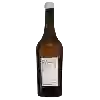
Winery SarmentellesMacvin du Jura
This wine generally goes well with
Details and technical informations about Winery Sarmentelles's Macvin du Jura.
Discover the grape variety: Muscat de Hambourg
Muscat de Hambourg noir is a grape variety that originated in . It produces a variety of grapes used to make wine. However, it can also be found eating on our tables! This variety of grape is characterized by large bunches and large grapes. Muscat de Hambourg noir can be found in several vineyards: South-West, Cognac, Bordeaux, Languedoc & Roussillon, Provence & Corsica, Rhone Valley, Loire Valley, Savoie & Bugey, Beaujolais, Armagnac.
Last vintages of this wine
The best vintages of Macvin du Jura from Winery Sarmentelles are 0
Informations about the Winery Sarmentelles
The Winery Sarmentelles is one of of the world's greatest estates. It offers 6 wines for sale in the of Jura to come and discover on site or to buy online.
The wine region of Jura
The Jura is a small wine region in eastern France that is responsible for some very special and traditional wine styles. It is close to the Swiss Jura, but quite distinct from it. Wedged between Burgundy to the west and Switzerland to the east, the region is characterized by a landscape of Wooded hills and the winding topography of the Jura Mountains. The Jura vineyards cover just over 1,850 hectares, forming a narrow strip of land almost 80 km Long from North to South.
The word of the wine: Thinning
Also known as green harvesting, the practice of removing excess bunches of grapes from certain vines, usually in July, but sometimes later. This is often necessary, but not always a good thing, as the remaining bunches often gain weight.














